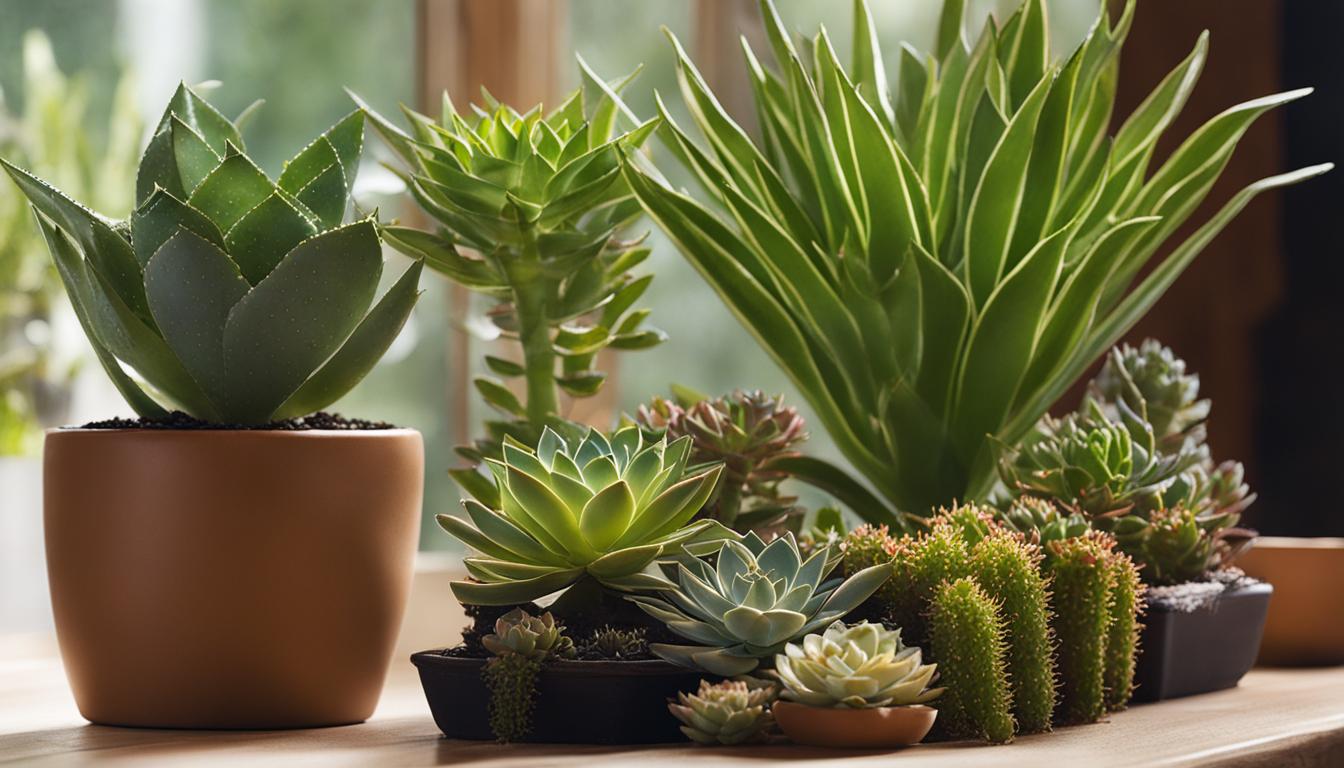
Knowing how often to water indoor plants is crucial for their health and longevity. Over-watering or under-watering can harm your plants, so it’s important to find the optimal watering schedule.
Different types of houseplants have different watering needs, but as a general rule, most houseplants should be watered once or twice a week in the spring and summer, and less in the autumn and winter.
It’s important to consider factors such as the type of plant, potting soil moisture, and environmental conditions when determining the frequency of watering.
Key Takeaways:
- Most houseplants should be watered once or twice a week in the spring and summer, and less in the autumn and winter.
- Consider factors such as the type of plant, potting soil moisture, and environmental conditions when determining the frequency of watering.
- Signs that indicate indoor plants need watering include wilting leaves, dry potting soil, and light pots.
- Proper watering techniques include watering the soil around the plant rather than the leaves, using room temperature water, and pouring enough water to thoroughly soak the soil.
- Filtered or rainwater is best for watering indoor plants, but if tap water is used, let it sit for 24 hours to allow chlorine to evaporate.
Factors to Consider for Watering Indoor Plants
When it comes to watering indoor plants, there are several important factors to consider in order to establish an optimal watering schedule.
These factors include the type of plant, pot size, potting soil, environmental conditions, and the time of year. By taking these factors into account, you can ensure that your indoor plants receive the right amount of water for their specific needs.
The Type of Plant
Different types of indoor plants have different watering requirements. Tropical plants, for example, generally need more frequent watering compared to desert plants like cacti and succulents.
It’s important to research and understand the specific watering needs of your plants to avoid over-watering or under-watering.
Pot Size and Potting Soil
The size of the pot can also affect the watering needs of your indoor plants. Smaller pots tend to dry out faster and may require more frequent watering.
Also, the type of potting soil used can impact moisture retention. Some potting soils hold water better than others, so it’s important to choose a high-quality soil that provides adequate drainage.
Environmental Conditions and Time of Year
The environmental conditions in your home, such as temperature and humidity, can also influence the watering needs of your indoor plants.
During hot and dry weather, plants may require more frequent watering to prevent dehydration. In contrast, during cooler months or periods of lower humidity, plants may need less water.
Plants often have different growth patterns throughout the year, so adjusting your watering schedule accordingly can help promote healthy growth.
By considering these factors and tailoring your watering practices to meet the specific needs of your indoor plants, you can help ensure their health and vitality.
| Factors to Consider | Impact on Watering Needs |
|---|---|
| Type of plant | Different plants have different watering requirements. Tropical plants generally need more frequent watering compared to desert plants. |
| Pot size | Smaller pots dry out faster and may require more frequent watering. |
| Potting soil | The type of potting soil used can impact moisture retention. Some soils hold water better than others. |
| Environmental conditions | Temperature and humidity levels in your home can affect the watering needs of your plants. |
| Time of year | Plants often have different growth patterns throughout the year, requiring adjustments in watering frequency. |
Signs to Look for When Watering Indoor Plants
Knowing when to water your indoor plants correctly is essential for their health and well-being. By paying attention to signs and cues from your plants, you can ensure that they receive the proper moisture they need to thrive. Here are some key signs to look for when determining if your indoor plants need watering:
1. Wilting Leaves:
One of the most obvious signs that your indoor plants need watering is when their leaves start to wilt. Wilting leaves are a clear indication that the plant is not getting enough water. However, it’s important to note that not all plants exhibit wilting in the same way, so familiarize yourself with the specific wilting patterns of your plants.
2. Dry Potting Soil:
Another sign to look for is dry potting soil. Stick your finger about an inch into the potting mix to check for dryness. If the soil feels dry, it’s time to water. Keep in mind that different types of plants have different moisture requirements, so it’s important to gauge the dryness of the soil accordingly.
3. Light Pots:
Observe the weight of the pot. If it feels light, it’s a sign that the plant needs watering. As plants use up water, the pot becomes lighter. This is especially true for smaller pots, as they dry out faster and may require more frequent watering.
By keeping an eye out for these signs, you can ensure that your indoor plants are watered correctly and maintain their health and beauty.
Signs to Look for When Watering Indoor Plants
| Signs | Meaning |
|---|---|
| Wilting Leaves | Indicates that the plant is not getting enough water |
| Dry Potting Soil | The soil feels dry and needs watering |
| Light Pots | The pot feels light, indicating that the plant needs watering |
Watering Techniques for Indoor Plants
Proper watering techniques are essential for the health and well-being of indoor plants. By using the correct methods, you can ensure that your plants receive the right amount of hydration without causing water damage. Here are some watering tips to help you care for your indoor plants:
1. Water the soil, not the leaves
When watering your indoor plants, it’s important to focus on watering the soil rather than the leaves. Watering the leaves can promote the growth of disease and fungus, which can harm your plants.
Instead, pour water directly onto the soil at the base of the plant, ensuring that the roots receive the moisture they need.
2. Water in the morning
It’s best to water your indoor plants in the morning. This allows any excess moisture to evaporate throughout the day, reducing the risk of waterlogged soil and root rot. Watering in the morning also gives your plants a chance to absorb the water and nutrients they need to thrive.
3. Use room temperature water
When watering your indoor plants, it’s important to use room temperature water. Cold water can shock the plants, while hot water can damage the roots. Fill a watering can or container with water and let it sit at room temperature for a few hours before using it to water your plants.
Following these watering techniques will help ensure that your indoor plants receive the proper hydration they need to thrive.
Remember to adjust the watering frequency based on the specific needs of your plants and the surrounding environmental conditions. By taking care of your indoor plants and providing them with the right amount of water, you can enjoy their beauty and longevity.
Types of Water to Use for Indoor Plants
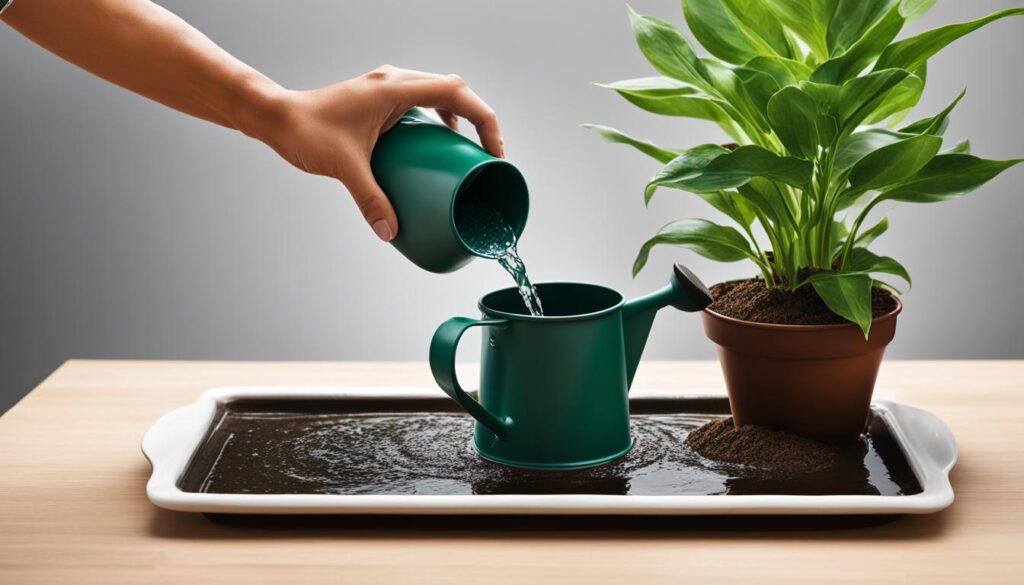
When it comes to watering indoor plants, the type of water you use can make a difference in their overall health and well-being. While most tap water is safe for plants, it’s important to consider factors such as water quality and temperature. Here are some best practices and guidelines for watering indoor plants:
Filtered or Rainwater
Filtered or rainwater is considered the best option for watering indoor plants. These sources are free from harmful chemicals, such as chlorine or fluoride, which can adversely affect plant growth. Also, rainwater often contains natural nutrients that can benefit your plants.
Tap Water
If filtered or rainwater is not available, tap water can be used for watering indoor plants. However, it’s important to be mindful of the water quality.
Some areas have tap water that has been softened or contains high levels of chlorine, which can harm plants over time. To mitigate this, you can let tap water sit for 24 hours before using it to allow the chlorine to evaporate.
Room Temperature
Regardless of the water source, it’s crucial to use room temperature water for watering indoor plants. Cold water can shock the plants, while hot water can damage their roots. By ensuring that the water is at room temperature, you provide a comfortable environment for your plants to absorb moisture.
| Type of Water | Benefits | Considerations |
|---|---|---|
| Filtered or Rainwater | Free from harmful chemicals, contains natural nutrients | May not always be readily available |
| Tap Water | Convenient and accessible | Water quality may vary based on location |
| Room Temperature | Prevents damage to plant roots | Requires time to adjust water temperature |
By following these guidelines and using the appropriate type of water, you can ensure that your indoor plants receive the hydration they need to thrive. Remember to consider the water quality, temperature, and availability, and make adjustments accordingly. Your plants will thank you with healthy, vibrant growth.
Common Mistakes to Avoid When Watering Indoor Plants
Proper watering is essential for the health and well-being of indoor plants, but there are common mistakes that many people make. By avoiding these mistakes, you can ensure that your plants receive the right amount of water and thrive.
1. Overwatering on a strict schedule
One of the most common mistakes is watering indoor plants on a strict schedule, regardless of their needs. Each plant is unique, and its watering requirements may vary.
Instead of following a set schedule, assess the moisture level of the soil and observe signs of wilting before watering. This will help prevent overwatering, which can lead to root rot and other issues.
2. Watering the leaves instead of the soil
Another mistake is watering the leaves of indoor plants instead of the soil. While it may seem convenient to spray water directly on the leaves, this can lead to disease and fungal growth.
To prevent these issues, always water the soil around the plant’s base, allowing the water to reach the roots where it’s needed most.
3. Improper drainage and using too much water
Improper drainage can also be a common mistake when watering indoor plants. Ensure that your pots have drainage holes at the bottom to allow excess water to escape.
It’s important to use the correct amount of water for each plant. Overwatering can suffocate the roots and cause damage, so pour enough water to thoroughly soak the soil but avoid creating standing water in the pot.
By avoiding these common mistakes and following proper watering practices, you can help your indoor plants thrive and enjoy their beauty for years to come.
Adjusting Watering Frequency for Seasonal Changes
When it comes to watering indoor plants, adjusting the frequency based on seasonal changes is essential. Different seasons bring varying environmental conditions that directly affect the moisture needs of your plants.
By taking the time to understand these changes and adapting your watering schedule accordingly, you can ensure the optimal growth and health of your indoor garden.
Determining the watering frequency
In spring and summer, when plants are actively growing, they require more water to support their growth and replenish moisture loss.
This is the time when you should increase the watering frequency, ensuring that the soil is consistently moist. On the other hand, during autumn and winter, when plants enter a dormant phase, their water requirements reduce.
It’s important to scale back on watering and allow the soil to dry out a bit between waterings. This prevents overwatering and helps prevent issues like root rot.
Observing plant growth and moisture levels
An effective way to determine the watering frequency is to closely observe the growth patterns of your plants and monitor the moisture levels in the soil.
Check the top inch of soil by inserting your finger into it. If it feels dry, it’s a sign that your plants may need watering.
But, if the soil is still moist, it’s best to hold off on watering. Remember that each plant has different moisture requirements, so it’s important to tailor your watering schedule to their specific needs.
| Season | Watering Frequency |
|---|---|
| Spring | More frequent watering |
| Summer | More frequent watering |
| Autumn | Reduced watering |
| Winter | Reduced watering |
Remember, these guidelines are general recommendations, and it’s important to tailor your watering schedule to the specific needs of your plants. By paying attention to seasonal changes and adjusting your watering frequency accordingly, you can provide the optimal care and create a thriving indoor garden.
Recovering Overwatered Indoor Plants
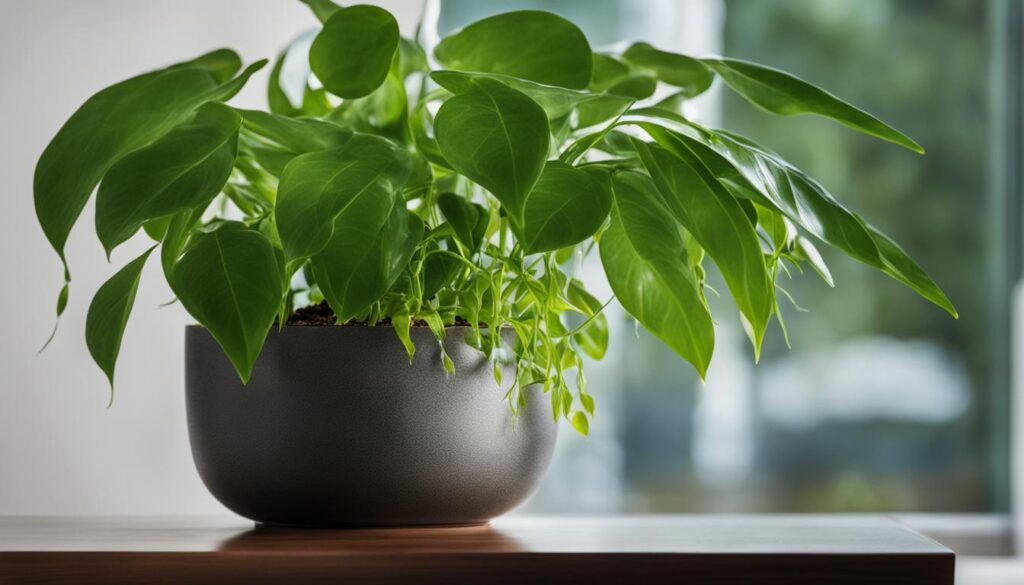
If you’ve accidentally overwatered your indoor plants, don’t despair. With the right steps, you can help them recover and thrive once again. Proper care and attention are key to restoring the health of your plants.
First, it’s important to allow the soil to dry out before watering again. Excess moisture can lead to root rot and other issues, so give your plants a chance to dry out and rejuvenate.
Check the moisture level of the soil by sticking your finger about an inch into the potting mix. If it feels wet, hold off on watering until it dries out.
Additionally, repotting your overwatered plant can help stimulate growth and recovery. Carefully remove the plant from its current pot, gently shake off excess soil, and inspect the root system.
Trim any damaged or mushy roots, as they can impede the plant’s ability to absorb nutrients. Then, repot the plant in fresh, well-draining soil to ensure proper moisture balance.
As you move forward with watering, be mindful of your practices to prevent further damage. Adjust your watering schedule based on the specific needs of each plant, taking into consideration factors such as the type of plant, pot size, and environmental conditions.
By providing the right amount of water at the right time, you can promote healthy growth and prevent future issues.
Proper indoor plant care and watering techniques are essential for the health and vitality of your plants. By following the guidelines for watering indoor plants, you can ensure that your indoor garden thrives.
It’s important to understand the specific watering needs of each plant and take into account factors such as the type of plant, pot size, and environmental conditions.
Observing signs of moisture levels, such as wilting leaves and dry soil, can help you determine when to water your indoor plants.
Avoid overwatering or underwatering by adjusting the watering frequency based on seasonal changes and the growth patterns of your plants. Remember to water the soil around the plants and avoid watering the leaves to prevent disease and fungal growth.
Using the best type of water, such as filtered or rainwater, can further enhance the health of your plants.
Be mindful of common watering mistakes, such as watering on a strict schedule or using improper techniques. With these best practices in mind, you can maintain healthy, vibrant indoor plants that will beautify your home or office space.
FAQ
How often should indoor plants be watered?
Most houseplants should be watered once or twice a week in the spring and summer, and less in the autumn and winter. However, the watering frequency may vary depending on factors such as the type of plant, potting soil moisture, and environmental conditions.
What factors should be considered for watering indoor plants?
Factors to consider include the type of plant, pot size, potting soil, environmental conditions, and the time of year. Different plants have different watering needs, and factors such as pot size and humidity levels also play a role in determining watering frequency.
What signs should I look for when watering indoor plants?
Signs that indicate plants need watering include wilting leaves, dry potting soil, and light pots. Checking the moisture level of the soil and observing the overall growth of the plants can help determine if they need watering.
What are the proper watering techniques for indoor plants?
It is recommended to water the soil around the plant rather than the leaves to prevent disease and fungus. Watering in the morning and using room temperature water are also recommended. Pour enough water to thoroughly soak the soil until water starts to run out of the drainage holes at the bottom of the pot.
What type of water should I use for watering indoor plants?
Ideally, filtered or rainwater is best for watering indoor plants as they are free from harmful chemicals. If filtered or rainwater is not available, letting tap water sit for 24 hours can allow chlorine to evaporate. Most tap water is safe for plants, but avoid using water that has been softened or contains high levels of chlorine.
What common mistakes should I avoid when watering indoor plants?
Common mistakes include watering on a strict schedule without considering plant needs, watering the leaves instead of the soil, and over-watering due to improper drainage or using too much water. It’s important to assess moisture levels and adjust watering practices accordingly.
How should I adjust watering frequency for seasonal changes?
Plants generally require more water during their active growth periods in spring and summer, and less water during dormant periods in autumn and winter. Observing the growth patterns of your plants and adjusting watering frequency accordingly can help maintain their health.
How can I help indoor plants recover from overwatering?
If you suspect overwatering, allow the soil to dry out before watering again. Repotting the plant with fresh soil and trimming any damaged or mushy roots can aid in recovery. Adjusting watering practices moving forward is also important to prevent further damage.
What are the best practices for watering indoor plants?
Proper watering is essential for the health of indoor plants. By understanding the watering needs of your specific plants, observing signs of moisture levels, using proper watering techniques, and adjusting watering frequency based on seasonal changes, you can ensure that your indoor plants thrive.

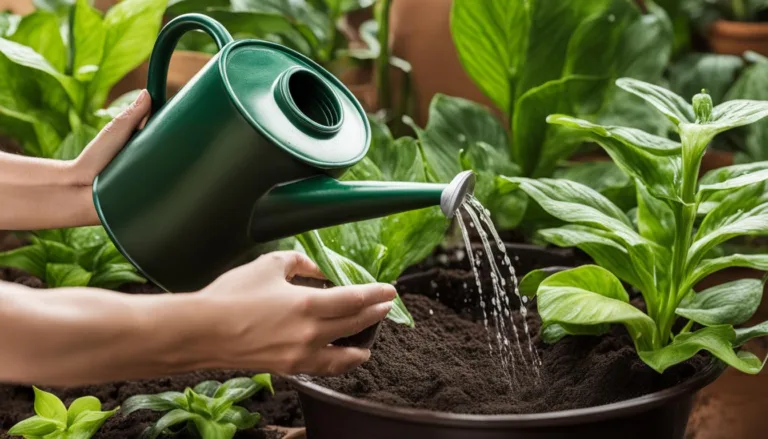
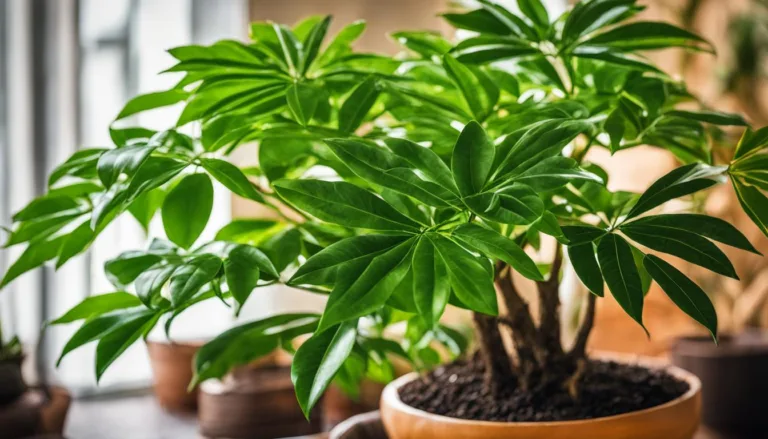
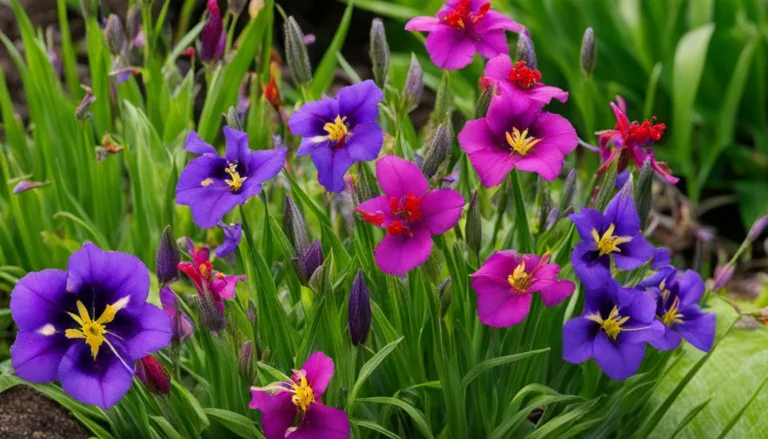
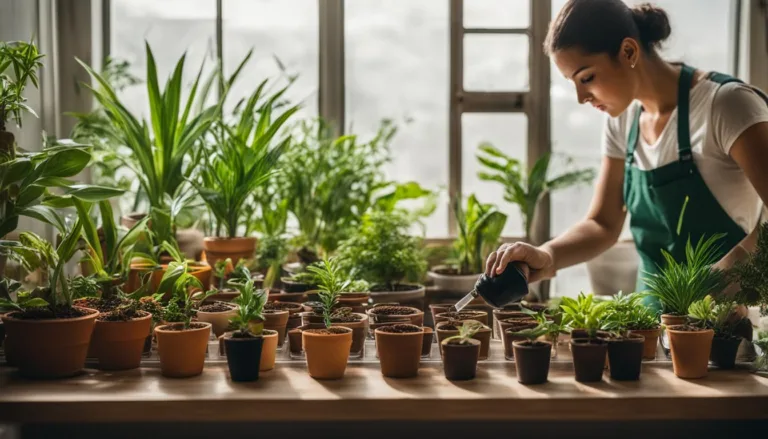
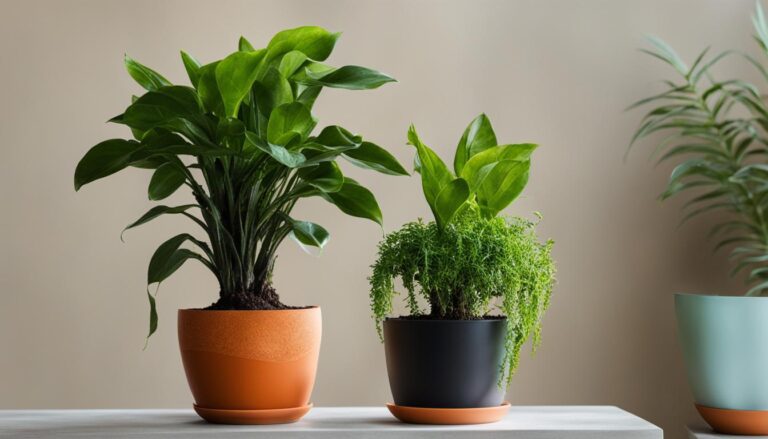
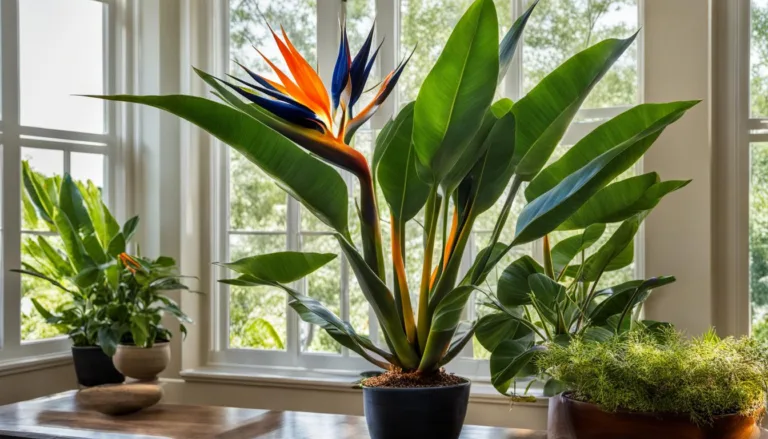
3 Comments
Comments are closed.